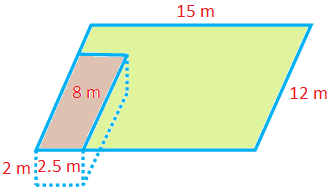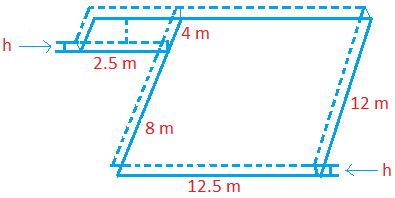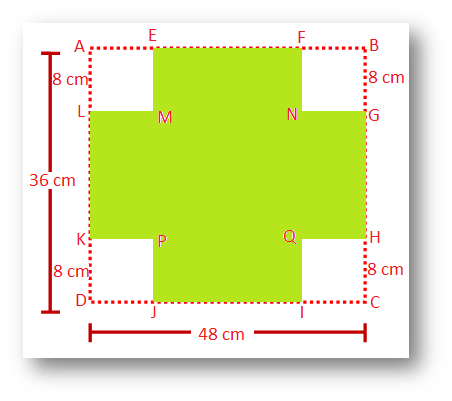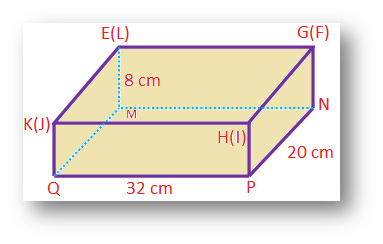Subscribe to our ▶️ YouTube channel 🔴 for the latest videos, updates, and tips.
Volume of Cuboid
Here we will learn how to solve the application problems on Volume of cuboid using the formula.
Formula for finding the volume of a cuboid
Volume of a Cuboid (V) = l × b × h;
Where l = Length, b = breadth and h = height.
1. A field is 15 m long and 12 m broad. At one corner of this field a rectangular well of dimensions 8 m × 2.5 m × 2 m is dug, and the dug-out soil is spread evenly over the rest of the field. Find the rise in the level of the rest of the field.
Solution:
The volume of soil removed = The Volume of the Well
= 8 m × 2.5 m × 2 m
= 8 × 2.5 × 2 m3
= 40 m3
Let the level of the rest of the field be raised by h.
The volume of the soil spread evenly on the field
= Volume of the cuboid of dimensions + Volume of the cuboid of dimensions
= 2.5 m × 4 m × h + 12.5 m × 12 m × h
= (2.5 m × 4 m × h + 12.5 m × 12 m × h)
= (10h + 150h) m\(^{2}\)
= 160h m\(^{2}\)
Therefore, 160h m\(^{2}\) = 40 m3
⟹ h = \(\frac{40}{160}\) m
⟹ h = \(\frac{1}{4}\) m
Therefore, the rise in the level = \(\frac{1}{4}\) m
= 25 cm
2. Squares each side 8 cm are cut off from the four corners of a sheet of tin measuring 48 cm by 36 cm. The remaining portion of the sheet is folded to form a tank open at the top. What will be the capacity of the tank?
Solution:
To make the tank, NGHP has to folded up along NP, LMQK along MQ, EFNM along MN and IJQP.
Now, MN = QP = (48 - 2 × 8) cm = 32 cm, and
NP = MQ = (36 - 2 × 8) cm = 20 cm.
EM = KQ = IP = GN = 8 cm.
Therefore, the capacity of the tank = 32 × 20 × 8 cm3
= 5120 cm3
= 5.12 litres [Since, 1 litre = 1000 cm3]
From Volume of Cuboid to HOME PAGE
Didn't find what you were looking for? Or want to know more information about Math Only Math. Use this Google Search to find what you need.






New! Comments
Have your say about what you just read! Leave me a comment in the box below. Ask a Question or Answer a Question.